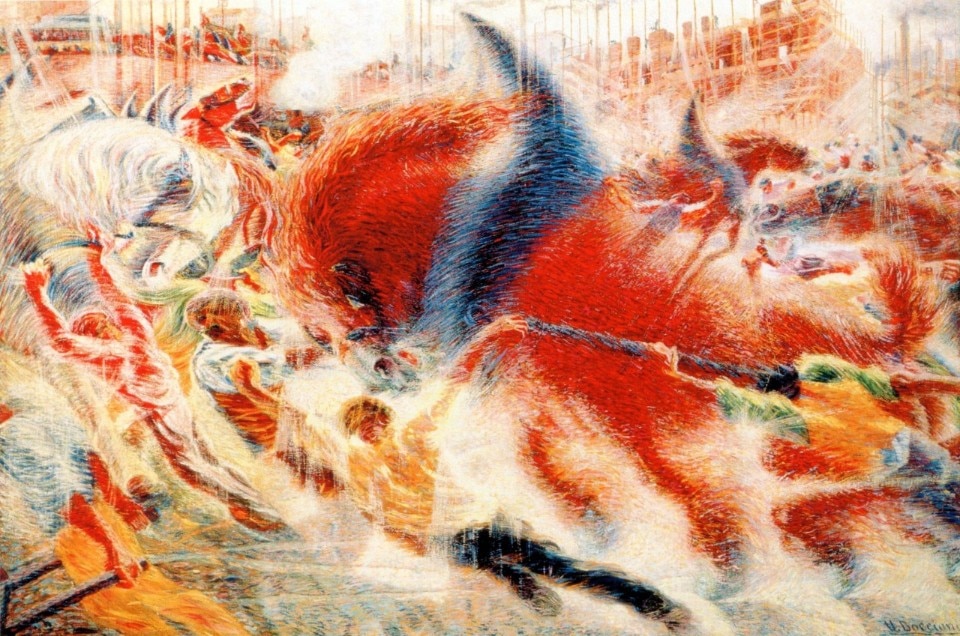To redesign, to reinvent oneself by using new tools, new ways, new social and work schemes – these are the implications of a global health emergency that has redesigned a new culture in every sector.
Technology has been a great ally for every company, sector, individual, forced to rapidly adapt to these changes without having a concrete self to reach materially, but only virtually. Work changes, and society and its habits change accordingly.
Modernity and progress were the key elements of Futurist painting: the exaltation of the new, of technology, of a new conception of the future in the early 1900s, a period marked by major socio-cultural changes. Work, men and their role in a new economic boost experienced the most radical changes. The rhythms and production methods had changed, and the working class that worked in the factories had changed as well. The proletariat became aware of itself and began to understand its own power to stand united in order to obtain new rights. As a consequence, the first strikes started, and their tumultuousness and strength soon became a source of inspiration for artists. In 1910, Umberto Boccioni painted The city rises: a city strike in Milan, a city that was beginning to grow just like all the other cities in Europe. This was the first Futurist work for the artist, who described the strength of the strike with a pictorial tangle characterized by rapid and filamentous brushstrokes, through a painting technique called Divisionism. The industrial buildings are set in a space where perspective is enveloping and does not follow the ancient geometric rules but rather expresses a strong pictorial and emotional movement. We see a fragment of a city tormented and revolutionized by modernity and an unprecedented new reality. In the foreground, some men are trying to hold back some frenzied horses, desperately fused in a dynamic effort. In the background we see chimneys, scaffolding of new structures under construction, a small crowd of men shouting and striking, a fusion that takes shape from a pictorial vortex created by lines that are everything but static.
During the 1911 exhibition in Milan, Boccioni commented his own painting: “The force-lines channel the painting’s energies in multiple directions, thus encircling and involving the spectator who will struggle himself with the persons in the picture.” The modern city, the future metropolis, is shaped on the needs of a new concept: the man of the future, progress.
The New City must be born and grow at the same time as the new ideology of movement, of the machine, of work, and it doesn’t have anything in common with the static urban landscape of the past anymore. A vision of the Futurist city, a utopian city made of work and factories, appeared on the first page of Marinetti’s manifesto, published on the French newspaper Le Figaro on February 20, 1909: “We had stayed up all night (...) arguing up to the last confines of logic and blackening many reams of paper with our frenzied scribbling. (...) Alone with stockers feeding the hellish fires of great ships, alone with the black spectres who grope in the red-hot bellies of locomotives launched down their crazy courses, alone with drunkards reeling like wounded birds along the city walls. Suddenly we jumped, hearing the mighty noise of the huge double-decker trams that rumbled by outside, ablaze with colored lights, like villages on holiday suddenly struck and uprooted by the flooding Po and dragged over falls and through gourges to the sea. Then the silence deepened. But, as we listened to the old canal muttering its feeble prayers and the creaking bones of sickly palaces above their damp green beards, under the windows we suddenly heard the famished roar of automobiles.”
A century later, a new form of futurism awaits us – a form of futurism where work, transport and cities will take on new forms and directions yet to be decided.
Opening image: Umberto Boccioni, The city rises, 1910-11


